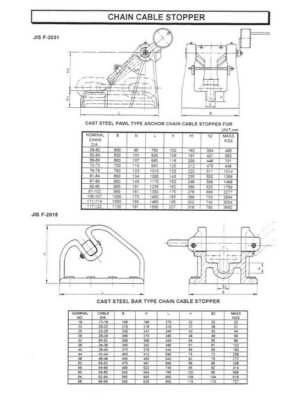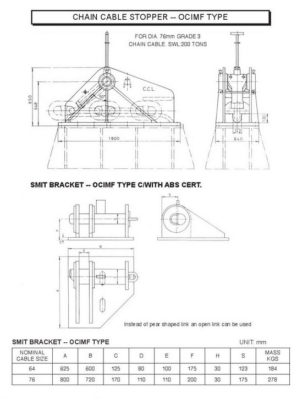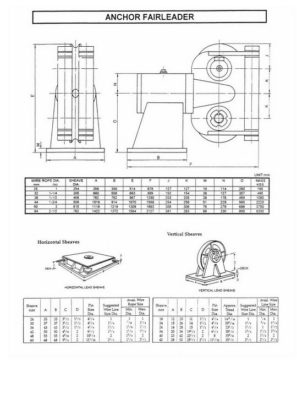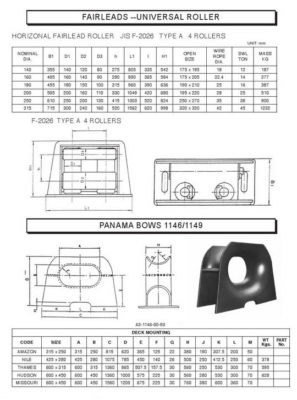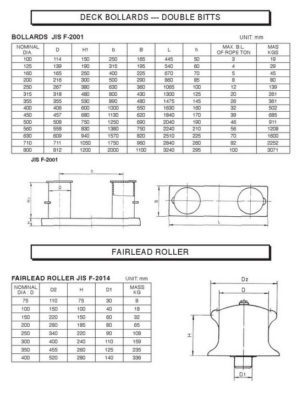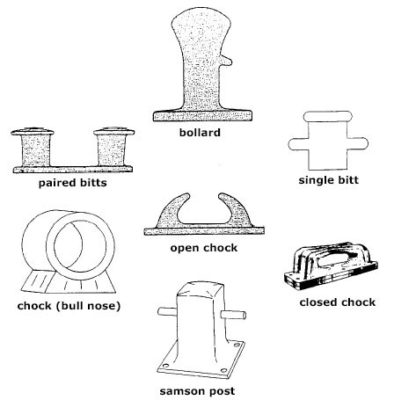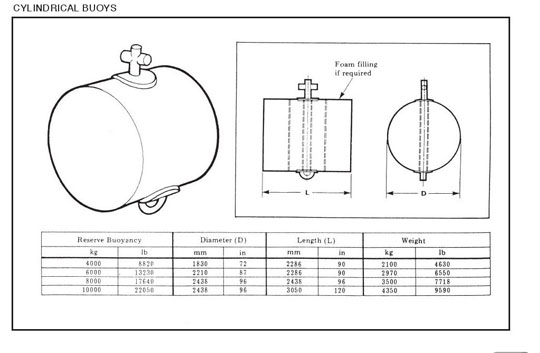
Mooring Equipment is the set of fittings and mechanisms aboard a ship that are used to warp and secure the ship when it is moored at a dock, at the wall of a lock, to buoys, or alongside another vessel.
A ship’s mooring equipment includes mechanisms, such as winches and capstans, that are used to take in and pay out mooring lines, which are ropes or steel cables. It also includes the following fittings: bitts and cleats, around which the mooring lines are made fast; stoppers, which temporarily hold the mooring lines; mooring chocks, rollers, and mooring pipes, which are used to change the direction of the mooring lines; manually operated or mechanized reels, on which the mooring lines are stowed; and line throwers, which throw the mooring lines from the ship.
The present day level of mechanization in the operations of warping a ship and of taking in, paying out, and making fast the mooring lines is achieved by means of warping winches, which provide constant line tautness and have remote control. Such winches automatically take up slack or, if a mooring line is too taut, pay out line when a ship’s position relative to a dock changes during cargo handling, during tides, or because of waves.
The dimensions of individual pieces of mooring equipment and the rate at which mooring lines are taken in are regulated by classification societies. They depend on a ship’s area of operation and on the dimensions of the ship and of the ship’s superstructures, deckhouses, and other deck structures.
We have a wide array of Deck Fittings and Offshore Mooring Equipment such as mooring winches, anchor windlasses, chain stoppers, fairleads and capstans.


